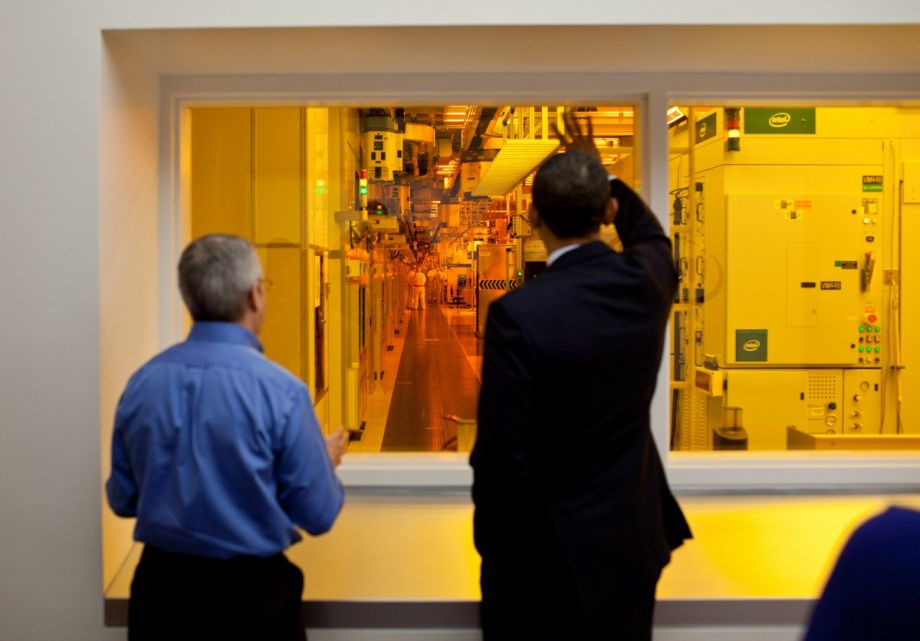President Obama has managed to hide away, in plain sight, one the more inventive things an American president has pulled off in recent memory.
Take this tidbit from his 2013 State of the Union address: “A once-shuttered warehouse is now a state-of-the art lab where new workers are mastering the 3D printing.” And from this year’s: “My administration has launched two hubs for high-tech manufacturing in Raleigh and Youngstown.” Obama will talk about these spaces again today when he officially announces the awarding of two more such factories, one in Detroit and one in Chicago, with $70 million in Defense Department spending behind each. (The White House did us the favor of previewing the decisions early.)
The institutions are part of what the Obama administration has taken to calling the “Network for Manufacturing Innovation Program,” which the president is building out bit-by-bit. He eventually wants to see 45 such “teaching factories,” as he calls them. With the addition of those in Michigan and Illinois, he will have four so far.
Per the White House, the goal here is “Closing the gap between research and development (R&D) activities and the deployment of technological innovations in domestic production of goods.” Advocates talk about it as the “missing middle,” or the idea that while government has proven itself fairly good at research, tuning that into sellable products has been more challenging. The factories are meant to fill that middle, with government acting as a short-term catalyst. Organized as non-profits, the factories aim to become self-sustaining after seven years through “member fees, intellectual property licenses, contract research, and fee-for-service activities as examples.”
That, and the fact that they are built around approaches rather than specific solutions, is meant to mitigate some risk of putting up tens of millions of taxpayer dollars. (See: Solyndra.)
Indeed, each “networked” manufacturing hub has a specific focus. The first, in Youngstown, Ohio, launched in August 2012 as the National Additive Manufacturing Innovation Institute with a special focus on 3D printing. The second, in Raleigh, N.C., is called the Next Generation Power Electronics Innovation Institute. Chicago’s focus will be on “Digital Manufacturing and Design Innovation,” which, according to the White House, is this:
Advanced design and manufacturing tools that are digitally integrated and networked with supply chains can lead to ‘factories of the future’ forming an agile U.S. industrial base with significant speed to market advantage. A national institute focusing on the development of novel model-based design methodologies, virtual manufacturing tools, and sensor and robotics based manufacturing networks will accelerate the innovation in digital manufacturing increasing U.S. competitiveness.
Detroit’s, meanwhile, will focus on “Lightweight and Modern Metals Manufacturing”
Advanced lightweight metals possess mechanical and electrical properties comparable to traditional materials while enabling much lighter components and products. A national institute will make the U.S. more competitive by scaling-up research to accelerate market expansion for products such as wind turbines, medical devices, engines, armored combat vehicles, and airframes, and lead to significant reductions in manufacturing and energy costs.
The goal is to divvy up the work of advanced manufacturing, spreading the challenge — and the federal funding — across the country, inspired in part by international efforts like Germany’s Fraunhofer Institutes. By deeming Chicago the new national center for digital manufacturing, the hope is to create a new center of gravity that attracts interest from all corners. (Mayor Rahm Emanuel called the new center “Olympic gold” for the city.) Again, the White House:
Each institute is designed to serve as a regional hub designed to bridge the gap between applied research and product development, bringing together companies, universities and other academic and training institutions, and Federal agencies to co-invest in technology areas that encourage investment and production in the U.S. This type of “teaching factory” provides a unique opportunity for education and training of students and workers at all levels, while providing the shared assets to help companies, most importantly small manufacturers, access the cutting-edge capabilities and equipment to design, test, and pilot new products and manufacturing processes.
Obama would love for Congress to fund the full manufacturing network in one swoop. Indeed, he’s backed a bipartisan bill that would create a National Office of the Network for Manufacturing Innovation Program, but the legislation hasn’t gone anywhere. So he’s cobbling together funding from willing federal agencies as part of his so-called “Year of Action,” as in figuring out how to get done what he’d like without congressional approval. Bit by bit, the network is growing. Perhaps one day in Honolulu there will be a Center for Manufacturing Policy Policy in the Face of a Gridlocked Congress.

Nancy Scola is a Washington, DC-based journalist whose work tends to focus on the intersections of technology, politics, and public policy. Shortly after returning from Havana she started as a tech reporter at POLITICO.















